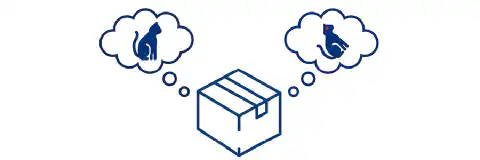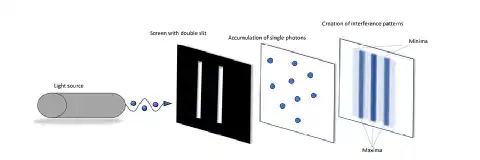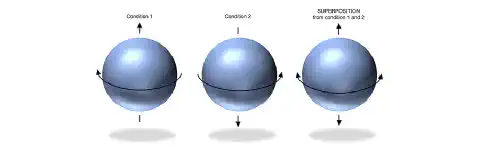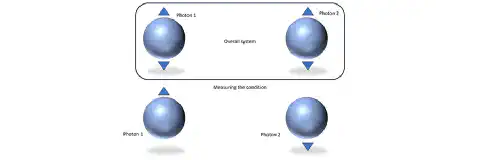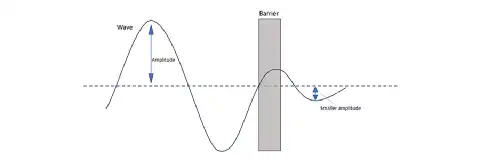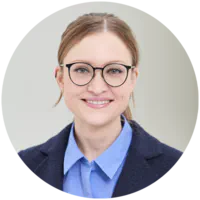
Quanta Explained: Superposition, Entanglement, and the Dance of Particles
(R)Evolution of Quanta in Research and Everyday Life
Content
From the tiniest building blocks of the universe to cutting-edge technologies, the quantum world is filled with mysteries that challenge and redefine our understanding of science and technology. But quanta aren’t just abstract concepts confined to physics labs – they already play a far more fundamental role in our everyday lives than many people realize.
Join us as we explore how subatomic particles form the very fabric of our universe and discover how quantum technologies are transforming fields like communications, sensor technology, computing, and medicine, with even more groundbreaking applications on the horizon.
Cats and Radioactivity: Quantum Physics and Its Surprising Everyday Connections
Quantum physics is the branch of modern physics that investigates the strange and often counterintuitive behavior of the very smallest particles, such as atoms, electrons, and photons. By describing processes and states at the atomic and subatomic level, it opens the door to possibilities that go far beyond what we experience in everyday life.
One of the most famous illustrations of the complex nature of quantum physics is the thought experiment known as Schrödinger’s Cat (see Fig. 1). In this hypothetical scenario, a cat is placed in a sealed box along with a vial of poison, a radioactive substance, a hammer, and a Geiger counter. Whether the radioactive atom decays – and triggers the hammer to break the vial – is entirely unpredictable. According to quantum theory, until someone opens the box and observes the system, the cat is both alive and dead at the same time. This paradox illustrates the principle of quantum superposition, where a quantum system can exist in multiple states simultaneously until it is measured or observed.
Fig. 1: The Schrödinger’s Cat thought experiment.
While it may sound abstract, the impact of quantum physics is everywhere. From processing payments at the supermarket checkout to navigating with GPS, from mobile phone communications to streaming your favorite shows, many everyday technologies rely directly on the principles of quantum physics – which brings us to an intriguing question:
What Are Quanta?
Quanta are the fundamental building blocks of reality – tiny quantum objects such as electrons, photons, and under certain conditions even entire atoms. Uniquely, they can behave both as discrete particles and as traveling waves, a phenomenon known as wave–particle duality. This paradox is famously demonstrated in the double-slit experiment.
Fig. 2: The double-slit experiment.
In this experiment, individual photons are fired toward an impermeable plate with two narrow slits (see Fig. 2). Although the photons are emitted one at a time and appear as small, individual dots (demonstrating their particle-like behavior), they also exhibit wave-like behavior by passing through both slits simultaneously. Over time, an interference pattern of alternating light and dark bands appears on the screen – something only waves can produce. This remarkable result is only possible because photons – in fact all quantum particles – exhibit both particle and wave properties.
Properties of Quantum Mechanics
Other principles of quanta that help us better understand the nature of matter and form the basis for today’s advanced quantum technologies are superposition, quantum entanglement, and quantum tunneling.
Superposition: The Overlapping of Quantum States
Die Überlagerung von Quantenzuständen Betrachtet man Quanten als mathematisch beschriebene Wellen, so besitzen sie mehr als eine Lösung. In der Quantenmechanik werden diese Lösungen als Eigenfunktionen der Wellenfunktion bezeichnet, die verschiedene Zustände eines Systems beschreiben können. Die Wellenfunktion, auch mathematische Beschreibung einer Materiewelle, ist eine Kombination aus mehreren linear kombinierten Basiszuständen. Das bedeutet, ein Quantenobjekt kann in mehreren Zuständen gleichzeitig existieren oder mehrere Eigenschaften gleichzeitig besitzen (vgl. Abb.3).
Fig. 3: Diagram showing the superposition principle. The photon exists in both states 1 and 2 at the same time.
A well-known example of superposition is the behavior of photons in the double-slit experiment (see Fig. 2), where a single photon passes through both slits simultaneously. In this case, the photon truly exists in two different states at the same time.
Superposition plays a critical role in modern technologies. In advanced measurement systems, it’s used to improve the accuracy and sensitivity of instruments. In quantum computing, superposition enables the parallel processing and transmission of large amounts of information. Since quantum bits (qubits) can exist in multiple states at once, quantum computers can process vast amounts of information in parallel. This capability boosts performance dramatically, allowing machines to run complex algorithms far more efficiently than traditional computers.
Invisible Bonds: Quantum Entanglement
Quantum entanglement describes a strange and powerful connection between quantum objects that remains intact even across vast distances. When two particles – such as photons or electrons – are entangled, their states are linked in such a way that the state of one instantly determines the state of the other, no matter how far apart they are.
As shown in the top part of Figure 4, the state of two entangled photons can only be described as a combined system. Each particle has a 50% chance of being in one of two states, but the state of the second particle is instantly known once the state of the first has been determined.
Figure 4: The principle of quantum entanglement.
Quantum entanglement is the foundation for quantum communication and plays a vital role in ensuring the security of quantum information transfer. When photons are used to transmit data, entanglement makes it possible to detect whether information has been intercepted or tampered with. Any attempt to observe or copy the quantum state leaves unmistakable traces, revealing both measurement errors and potential eavesdropping attempts.
Quantum Tunneling: When Quanta Penetrate Barriers
Quantum tunneling describes the ability of quantum particles to pass through barriers that, according to classical physics, they wouldn’t have enough energy to penetrate. When a quantum wave encounters a barrier (see Fig. 5), its amplitude decreases, but doesn’t drop completely to zero. This means there remains a non-zero probability of detecting the particle on the other side of the barrier, even though classical physics would predict it impossible.
Figure 5: Diagram of quantum tunneling
This remarkable property is used in imaging technologies. One prominent example is scanning tunneling microscopy (STM). In STM, a voltage is applied between an ultra-fine needle and the surface under examination. Even though the distance is too great for electrons to cross according to classical physics, the quantum tunneling effect allows them to do so, generating a measurable current. This current enables scientists to observe and image individual atomic structures with extraordinary precision.
Milestones in Quantum Technologies
The development of quantum technologies is a remarkable scientific journey that began at the start of the twentieth century. Over this period, two distinct “quantum revolutions” have fundamentally shaped the evolution of modern technology.
Quantum 1.0 – The First Quantum Revolution
The first revolution, known as Quantum 1.0, laid the groundwork for our understanding of quantum phenomena that had already been observed but not yet fully explained. Researchers focused on exploring the complex behavior of light and matter at atomic and subatomic scales. These discoveries led to groundbreaking innovations that continue to shape our daily lives – including the invention of the laser, LEDs, GPS, semiconductors, and many other technologies.
Quantum 2.0 – The Future of Quantum Technologies
Today, we are in the midst of the second quantum revolution – Quantum 2.0. This new era goes beyond simply understanding quantum mechanics; it’s about controlling and engineering quantum systems with precision. Scientists can now manipulate the oscillation frequencies of individual quantum objects to develop ultra-sensitive instruments and scalable quantum hardware. In particular, systems based on superconducting circuits have become leading platforms for building next-generation quantum machines.
Quantum technologies make it possible to control, manipulate, and measure the states and interactions of individual quantum particles, opening the door to entirely new devices and systems built on quantum mechanical principles.
Key developments of the second revolution include atomic clocks, quantum gravimeters, quantum computers, and quantum magnetometers. These innovations promise not only technological breakthroughs but also far-reaching impacts across nearly every area of society.
Quantum Physics in Practice: Applications Today and Tomorrow
Driven by significant global investment, quantum technology is no longer a purely theoretical field – it has already begun to enter the marketplace. Modern laser systems, quantum processors, and highly sensitive quantum microscopes are among the first wave of commercialized quantum technologies. This rapid development is reflected in the growing number of patents, scientific publications, and practical applications emerging from research labs around the world. Particular attention is focused on quantum computing, where the development of efficient algorithms and stable qubit architectures is critical. Quantum machines based on superconducting hardware or trapped ions are already demonstrating remarkable performance in experimental settings. The ability to write and optimize quantum code will become increasingly valuable for engineers and physicists alike.
Quantum technologies also promise transformative solutions for many of today’s most pressing challenges. In the future, advanced quantum sensors could provide earlier and more accurate warnings for natural disasters by delivering highly precise environmental data. In medicine, quantum technologies are already driving breakthroughs in diagnostics, making it possible to detect diseases like Alzheimer’s and Parkinson’s earlier and more reliably. They also open up exciting possibilities such as mind-controlled prosthetics, offering new hope for improving the quality of life for people with physical disabilities.
The automotive industry is another sector poised to benefit, particularly in the development of autonomous driving technologies. Quantum computers already demonstrate the ability to analyze complex environments and decision-making scenarios faster and more effectively than humans.
Quanta and Photonics
From superposition and entanglement to quantum tunneling, quanta reveal the hidden secrets of nature and open vast new horizons for future technologies. This introduction to the fundamentals of quantum physics sets the stage for a deeper exploration of the connection between quanta and photonics. In the second part of this series, we’ll examine how this synthesis is driving innovations in communications, sensor technology, and information technology. Stay tuned for cutting-edge developments that could transform entire industries and redefine the limits of human achievement.
Sources
- Neugebauer, R.: Quantentechnologien (Fraunhofer ZV), München 2022
- Kagermann, H./Süssenguth, F./Körner, J./Liepold, A.: Innovationspotenziale der Quantentechnologien der zweiten Generation (acatech IMPULS), München 2020
- Konzeptpapier der Nationalen Initiative zur Förderung der Quantentechnologie von Grundlagen bis Anwendungen (QUTEGA): QUANTENTECHNOLOGIE Grundlagen und Anwendungen, 2017
- Photonics@Quantum: Technologies for Quantum Systems (Marktreport SPECTARIS und Messe München), Berlin/München 2022
- Dowling J P./Milburn G. J.: Quantum technology: the second quantum revolution; the royal society, In: Philosophical Transactions: Mathematical, Physical and Engineering Sciences Vol. 361, No. 1809, Information, Knowledge and Technology (Aug. 15, 2003), pp. 1655-1674
